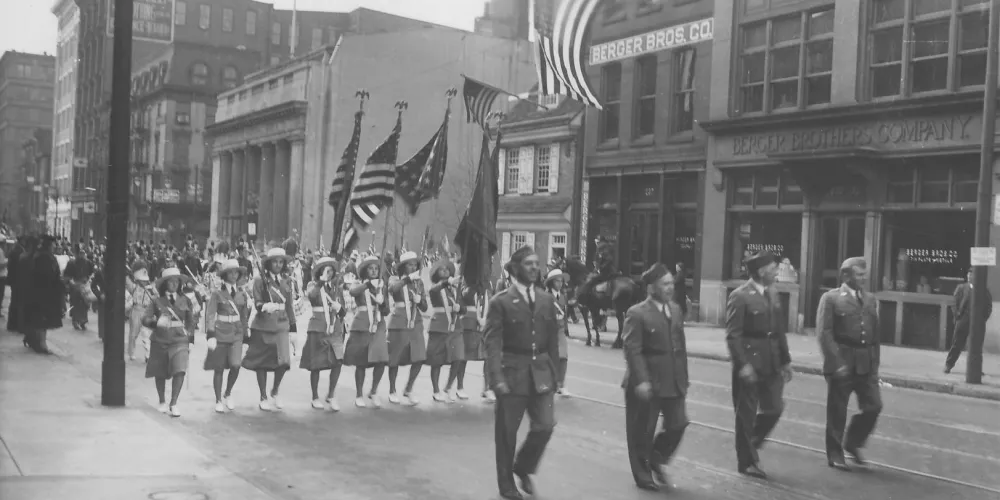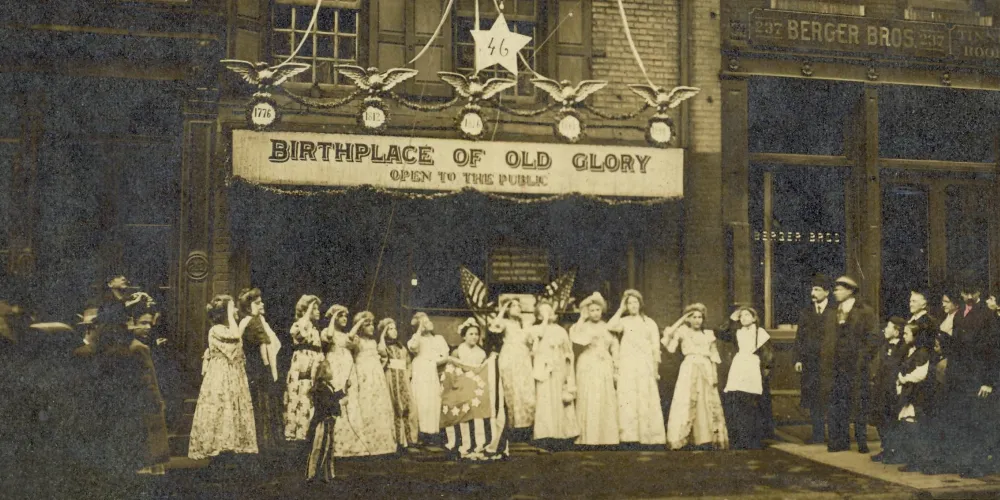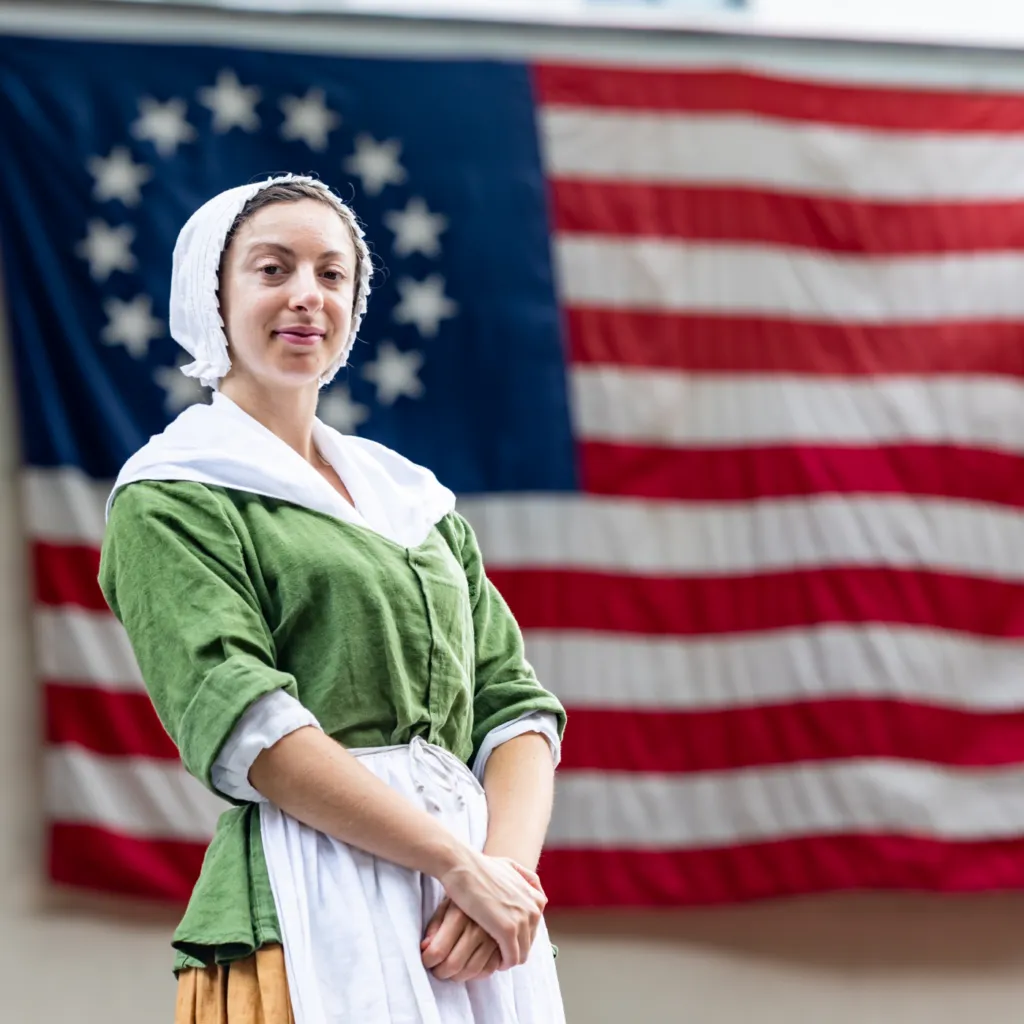
Although Betsy Ross lived a life worthy of recognition, it is the legend of Betsy sewing the first American flag that earned her a place in our hearts and in history. Over the last century, there has been some debate about whether she did or didn’t sew those first Stars and Stripes. So let’s take a look at what we really know.
It was Betsy’s grandson, William Canby, who first told the story in a speech he made to the Historical Society of Pennsylvania back in 1870. Canby and other members of Betsy’s family signed sworn affidavits stating that it was Betsy herself who told them the story of the making of the first flag.
According to the oral history, in 1776 three men – none other than George Washington, Robert Morris, and George Ross, visited Betsy Ross in her upholstery shop. After she escorted them to her parlor where they could meet in private, Washington showed Betsy a sketch of a flag with thirteen red and white stripes and thirteen six-pointed stars.
When Washington asked Betsy if she could make a flag from the design. Betsy responded: "I do not know, but I will try."
This line was used in the sworn statements of many of Betsy’s family members, suggesting that it is a direct quote from Betsy.
As the story goes, Betsy suggested changing the stars to five points rather than six and with just one snip of her scissors, showed them how to do it. With that, they all agreed to change the design to five-pointed stars.
Despite the absence of written records to prove the story, there is mounting evidence leading historians to believe the legend could be true:
- George Ross, a member of the Flag Committee, was the uncle of Betsy’s late husband, John. This could be one reason why Betsy was chosen to make the first flag. Another uncle-in-law, George Read, was a delegate from Delaware and a member of the Marine Committee with Robert Morris. Since making the flag was an act of treason, it is significant that these men would know of her allegiance to the Revolutionary cause.
- Historians at Mt. Vernon recently discovered documents that showed Betsy and John Ross made bed hangings for George Washington in 1774. This indicates that Washington would have been familiar with her and the quality of her work.
- It was common for upholsterers to take up other forms of work during wartime. Because they were no longer getting their regular upholstery work, many upholsterers earned money by making tents, uniforms, and flags for the soldiers.
- On May 29, 1777, Betsy Ross was paid a large sum of money from the Pennsylvania State Navy Board for making flags, and on June 14, 1777, Congress adopted the Stars and Stripes as our official national flag. Coincidence?
- Betsy continued to make flags for over 50 years, many of which were through government contracts and many receipts exist for her work in the first two decades of the 19th century. For example, in 1811, Betsy made over 50 garrison flags for the U.S. Arsenal on the Schuylkill River.
- In the 18th century, flags were not revered as they are today. The flag had not yet become a symbol of liberty or patriotism; it was more frequently regarded as a military tool like a tent or a uniform. Betsy Ross told her children and grandchildren the legendary story not because she had made the first flag, which was probably somewhat insignificant in her mind, but because General George Washington, a great man who would later become the first President of the United States, visited her home and asked her to make something for him.
So, whether you choose to believe Betsy Ross made the first flag, there is no doubt that she was a prominent early American flag maker who stitched flags for the federal government for more than 50 years.
Related Stories




